10 Animals Found In Indonesia
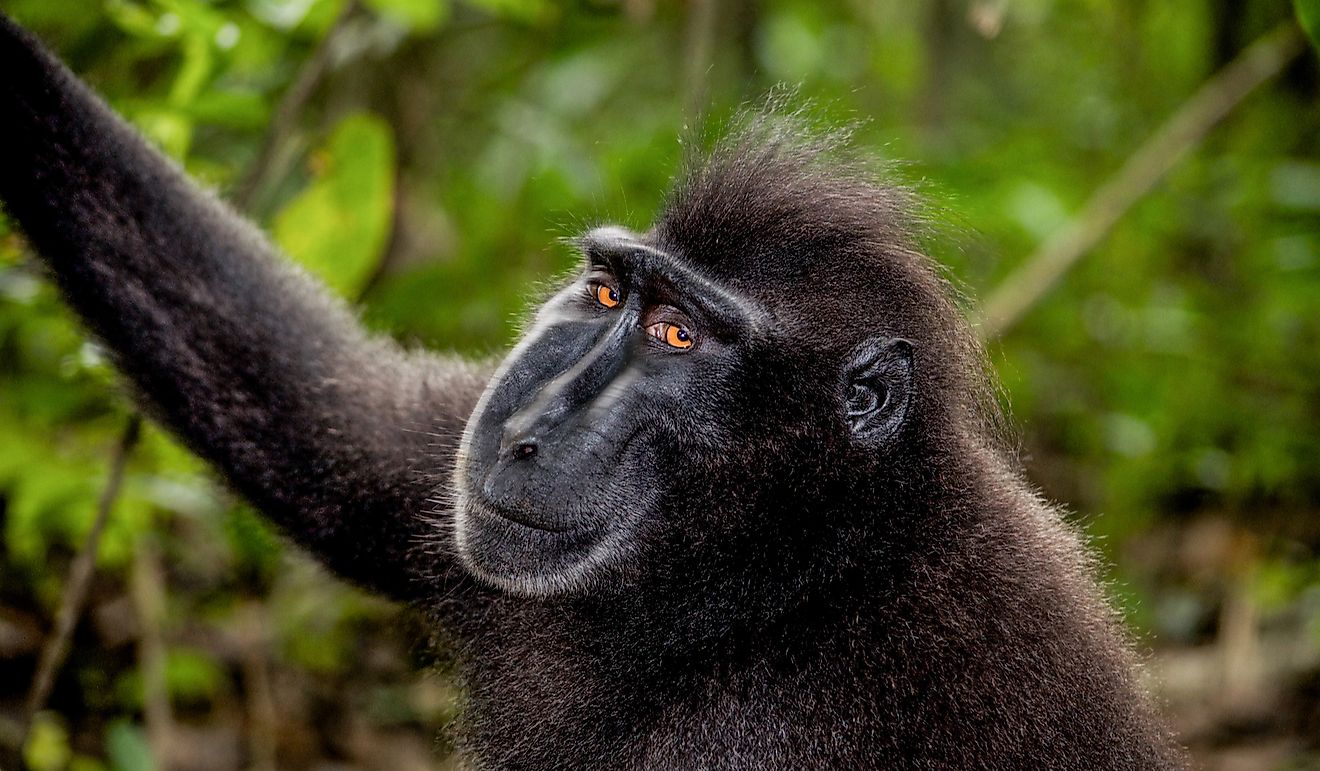
Indonesia is an island nation in South East Asia, located between the Indian and Pacific Oceans, and bordering Papua New Guinea, East Timor, Malaysia, Palau, Singapore, Vietnam, Australia, and the Philippines. Indonesia is the world’s largest island country, as it occupies a total area of 735,358 square miles and is composed of more than 17,000 islands. The country has an estimated population of 267 million, about half of which resides on the island of Java, and its capital and largest city is Jakarta. The Indonesian islands are home to unique flora and fauna that are either native, endemic or commonly found in the country.
Babirusa
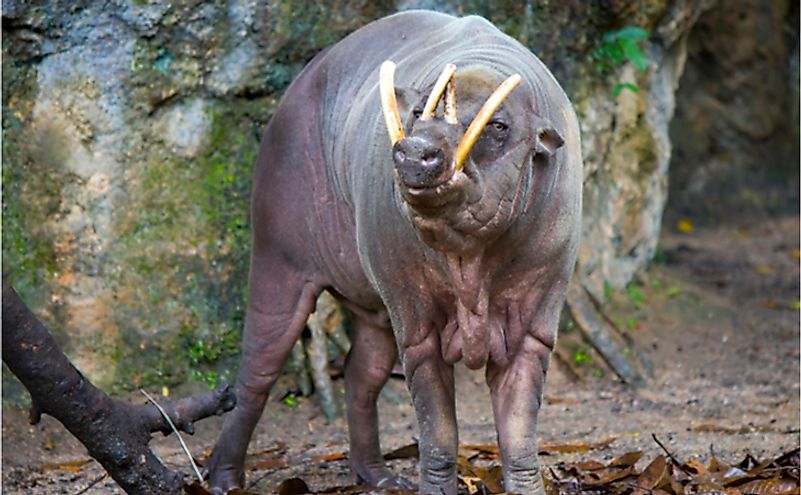
The babirusa is a wild boar belonging to the pig family, and is locally referred to as babi which means "pig," or rusa meaning "deer." These names are derived from the animal's physical features, as the babirusa’s head resembles that of a pig, whereas its legs are similar to those of a deer. It also has very long tusks that curve upwards, almost reaching its eyes. The babirusa feeds on fruits, usually during the night to avoid predators. Although the species is shy, it can become fierce when threatened. Babirusas primarily inhabit North Sulawesi and the surrounding islands.
Maleo Bird
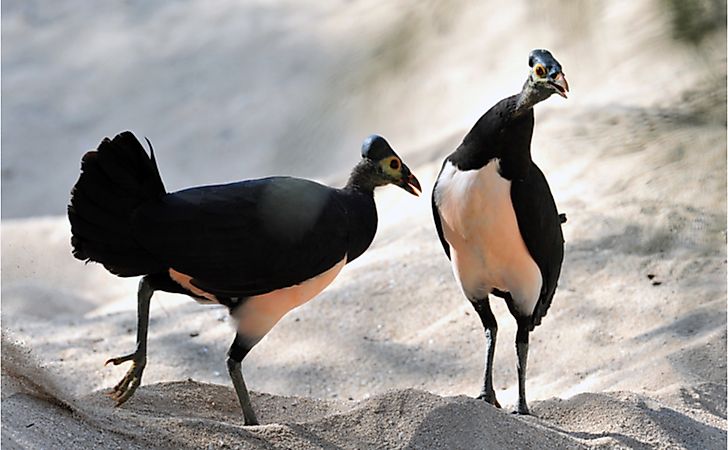
The maleo bird inhabits the Indonesian island of Sulawesi. The bird has a body structure like that of a turkey, a black body, yellow facial skin, and a colorful head. The maleo does not fly, but walks like a chicken. Although the maleo bird is the size of a chicken, it lays eggs that are five times bigger than chicken eggs. The bird does not hatch its eggs, but instead buries them in the sand that is warmed by natural geothermal heat. The eggs remain in the sand for 80 days, at which point they hatch. The maleo bird is an endangered species in Indonesia.
Black Macaque
The black macaque, locally known as the "wolai ape" or "yaki", is endemic to the Sulawesi region. More specifically, the species of Old World monkey inhabits the Tangkoko Reserve in northeastern Sulawesi. Its body is covered in black hair with a tuft on its head, and its diet includes leaves, nuts, flowers, tubers, insects, mollusks, and snakes. Black macaques are social by nature and live in groups of 5–25, in which female adults usually outnumber males. They typically inhabit highlands areas located more than 2,000 m above sea level.
Tarsius
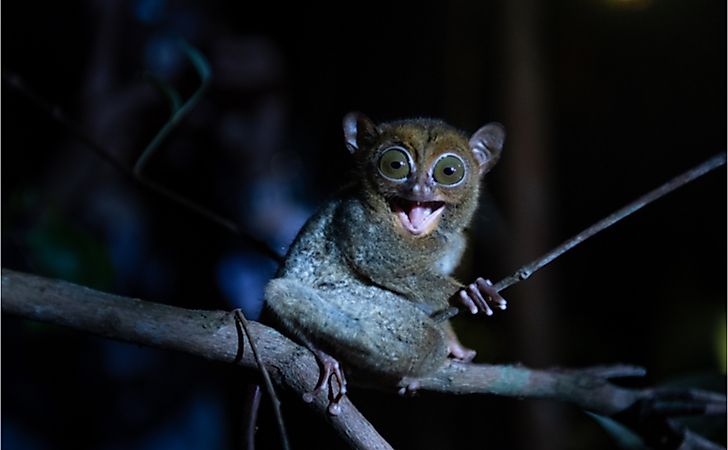
Tarsius, which is the world’s smallest primate, inhabits North Sulawesi. It has a length of between 10 and 15 cm and weighs an average of 80 grams. Tarsius have eyes that are 16 mm in diameter and take up a large part of its skull, long legs, and feed primarily on insects. The species is nocturnal, and has strong hunting skills that enable it to catch a bird in flight. Native to Southeast Asia, the tarsius is monogamous and when a mates dies, the primate never takes another mate. Tarsius is listed as "Vulnerable" (VU) on the International Union for Conservation of Nature's (IUCN) Red List.
Komodo Dragon
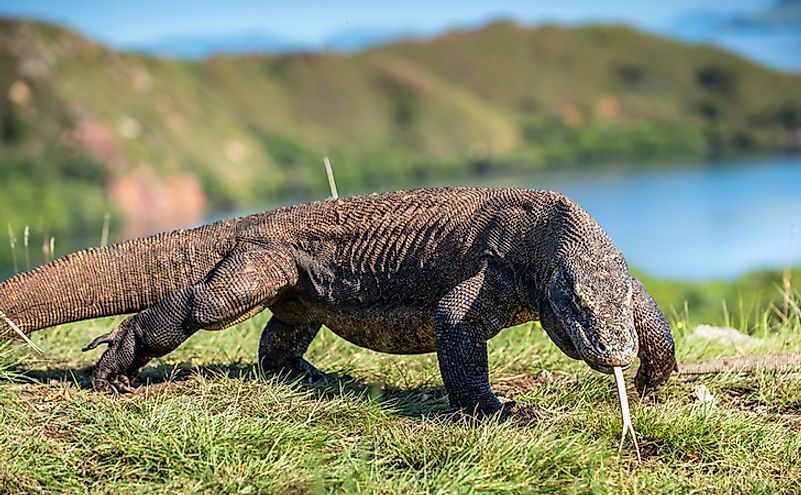
The Komodo dragon, also known as the Komodo monitor, is a species of lizard that inhabits the exotic islands of Komodo, Rinca, Gili Motang, Padar, and Flores. The animal can grow up to a length of 3 m and is considered the world’s tallest and biggest lizard. Additionally, it is also believed to be a close relative of the dinosaur, and the oldest of the ancient species still living today. Komodo dragons are carnivorous and feed on large prey including deer, pigs, goats, water buffalo, monkeys, carrions, and occasionally humans.
Javan Rhinoceros
Similar to the common rhinoceros, the Javan rhinoceros has firm armor-like skin and a strong anterior structure. However, unlike the other species of rhino, the male Javan rhinoceros has only one horn rather than two, and females have no horn. Javan rhinos are also considered the rarest of the large mammals, and are classified as "Critically Endangered" (CR) on the IUCN Red List. The species is a herbivorous and feeds on twigs, fallen fruits, and shoots.
Anoa Buffalo
The anoa buffalo, which is also referred to as the midget buffalo, resembles a water buffalo but is relatively small, and only slightly bigger than a goat. Its primary habitat includes the mountains and low land areas of the lush rainforests on the island of Sulawesi. There are two types of anoa buffaloes endemic to the island, namely the mountain anoa and lowland anoa. These buffalos have two sharp, backward-facing horns and weigh between 150 and 300 kg. The buffaloes enjoy wallowing in mud and are closely related to the Asian antelope. As a result of being hunted for their horns, hides, and meat, as well as habitat loss, anoa buffaloes are classified as "Endangered" (EN) on the IUCN Red List.
Cendrawasih Bird
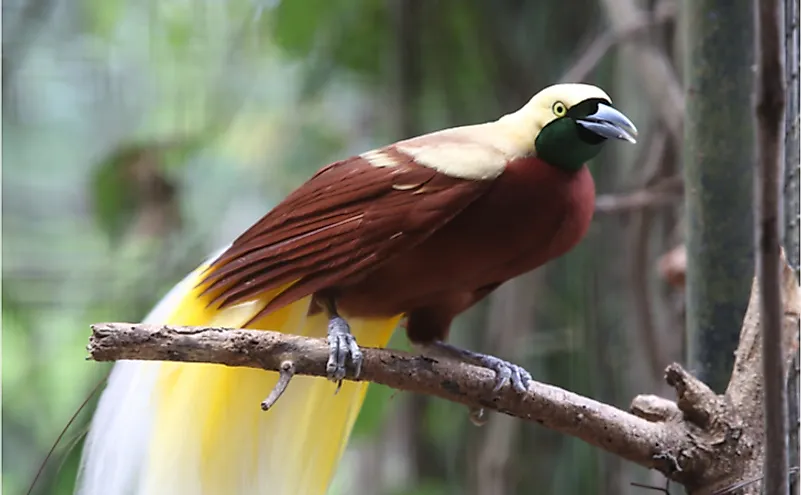
The Cendrawasih, which is nicknamed the bird-of-paradise, is a majestic and colorful bird. It is found in Papua, New Zealand, and the easternmost island of Indonesia. Males possess ornate and delicate feathers that have bright and inviting colors, as well as long tails that hang gracefully from their bodies. The bird is hunted for its beautiful plume that is used in New Guinea as part of traditional dress and rituals. The Cendrawasih is now endangered due to poaching and deforestation.
Sumatran Tiger
The Sumatran tiger is native to the Indonesian island of Sumatra. It is distinguished from other species of tiger by the dark color of its fur and its broad stripes. Although the smallest subspecies of the tiger family, the Sumatran tiger is ferocious. The population of the Sumatran tiger has been dwindling due to loss of habitat and illegal trade. Consequently, it is classified as "Endangered" (EN) on the IUCN Red List.
Bear Cuscus
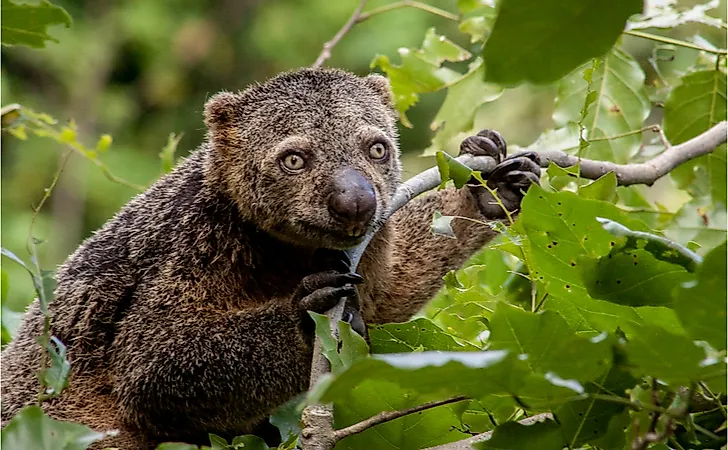
The bear cuscus is an arboreal marsupial that grows larger than the average species cuscus, hence the name "bear." The animal has an average height of 56 cm and a long, prehensile tail that measures 54 cm in length. The bear cuscus has eyes that are round and yellow-rimmed, resembling those of a lemur. The species is quiet in nature, making sounds only when disturbed. The bear cuscus is typically active during the day, although it spends most of its time sleeping and resting. The bear cuscus feeds primarily on leaves, and sometimes fruits.











